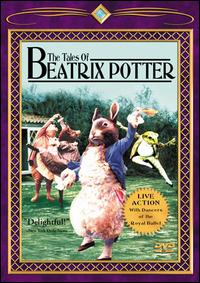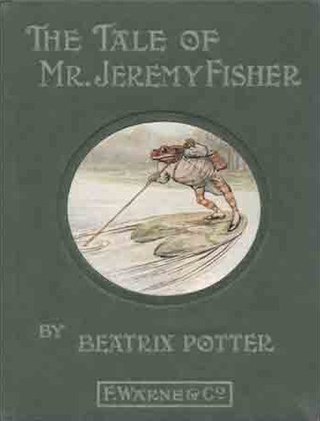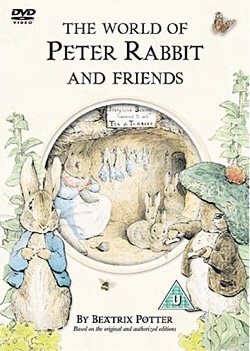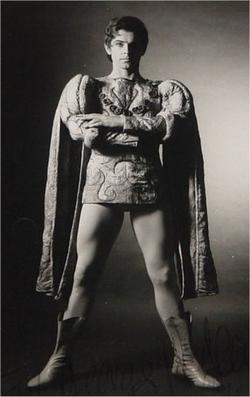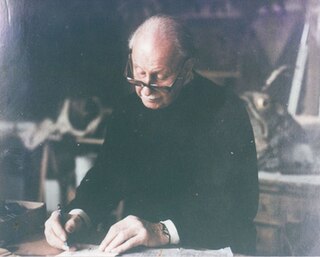Development
The idea started in 1968 when Christine Edzard travelled from Paris, where she was assistant to the designer Lila de Nobili, to work on the sets of Zeffirelli's Romeo and Juliet (1968) in Rome. There she met Goodwin, associate producer for John Brabourne who was making the film, and the two became a couple. They decided they would do something together and while in Britain meeting Goodwin's mother, Edzard saw and heard Beatrix Potter for the first time as Mrs. Goodwin read The Tale of Mrs. Tiggy-Winkle to her grandchildren. Edzard showed the “thoroughly English” book to Nobili, who was in Covent Garden with The Sleeping Beauty ballet, which featured dancing animals, mice and a cat. Nobili suggested it as a project for the couple, and the Tales as a ballet was born.
Lila de Nobili had brought Rostislav Doboujinsky over from Paris to make animal masks for the first act of The Sleeping Beauty and Doboujinsky talked with Goodwin and Edzard. In October 1969, he agreed to make a sample mask for mouse character 'Hunca Munca' whose face is “perhaps the most appealing in the film”. [6]
Conceived of as a filmed ballet, Goodwin and Edzard approached Frederick Ashton, former director of the Royal Ballet, to choreograph. [7] Ashton later said: "I was not certain that with films dominated by violence and sex the time was right for such an explosion of sheer charm. But now I think the public is more than ready for something like this." [1]
The couple's first approach to Frederick Warne, Beatrix Potter's publisher, was turned down firmly. (The estate had turned down an approach from Walt Disney because they were worried he would distort the work.) However, their ideas and Christine's initial sketches began to win them over and while both Warne and Ashton were still considering the proposed project, and terms being agreed, preparations for filming took place over the following year. It was a risk, and Goodwin acknowledged that had Warne in the end still refused, they would have “been ruined.”
Goodwin succeeded in getting the film rights from Potter's estate. The film was given the go ahead by Bryan Forbes during his period as head of production at EMI Films. He recalled that the EMI Board were not enthusiastic, and Nat Cohen had never heard of Beatrix Potter, but Forbes had complete artistic control for any movie made with a budget under £1 million so could easily gain approval. [8] "We were extremely lucky," said Brabourne about Forbes. [3]
Instead of a conventional screenplay, Edzard, who co-wrote the screenplay as well as designing the production and costumes, produced over two hundred sketches. The sketches were used to create the film's working script from a juxtaposition of five of Beatrix Potter's Tales - The Tale of Jemina Puddleduck, The Tale of Pigling Bland, The Tale of Jeremy Fisher, The Tale of Two Bad Mice and The Tale of Squirrel Nutkin. The film deviates at times from the plots but retains the authenticity of Potter's original, and features visitors such as Peter Rabbit from other books. [1] [2] [9]
It was the first collaboration with Goodwin by Edzard, who is known for her meticulous filmmaking, often based on Victorian English sources. [10] The couple went on to found Sands Films. [11] Their productions since include Stories from a Flying Trunk (1979), The Nightingale (1981), Biddy (1983), Little Dorrit (1987), The Fool (1990), As You Like It (1991), Amahl and the Night Visitors (1996), The IMAX Nutcracker (1997), The Children's Midsummer Night's Dream (2001) and The Good Soldier Schwejk (2018).
John Brabourne said Goodwin and Edzard "made all the costumes in their own house and we used my production company. Christine brought in that fantastic man, Rostislav Doboujinsky, who did the masks. It was all their conception, their idea, so I got behind it and pushed it but I thought it only fair that Richard should have the Producer credit." [3]
With Christine Edzard, Doboujinsky made the masks “on which much of the picture's success depended”. [12] Doboujinsky's original masks for the film, made of bike helmets, polystyrene, hand-sewn hair and vision holes covered in gauze, had to be recreated for the stage, with a larger field of vision for the dancers. The artist used moulds of the originals, drilling hundreds of holes at the front and covering the mask in nylon hair “using electrostatic charges.” [13]
The music was arranged by John Lanchbery, who had previously worked with Ashton on La fille mal gardée , Les Deux Pigeons and The Dream , based on themes by Balfe, George Jacobs, Ludwig Minkus, Jacques Offenbach, Arthur Sullivan and others. [14]
Producer Richard Goodwin called the film "a diversion... a souffle... it is an entertainment." [1] The costumes travelled to the US as an exhibition on board the QE2 in the year the film was released.
